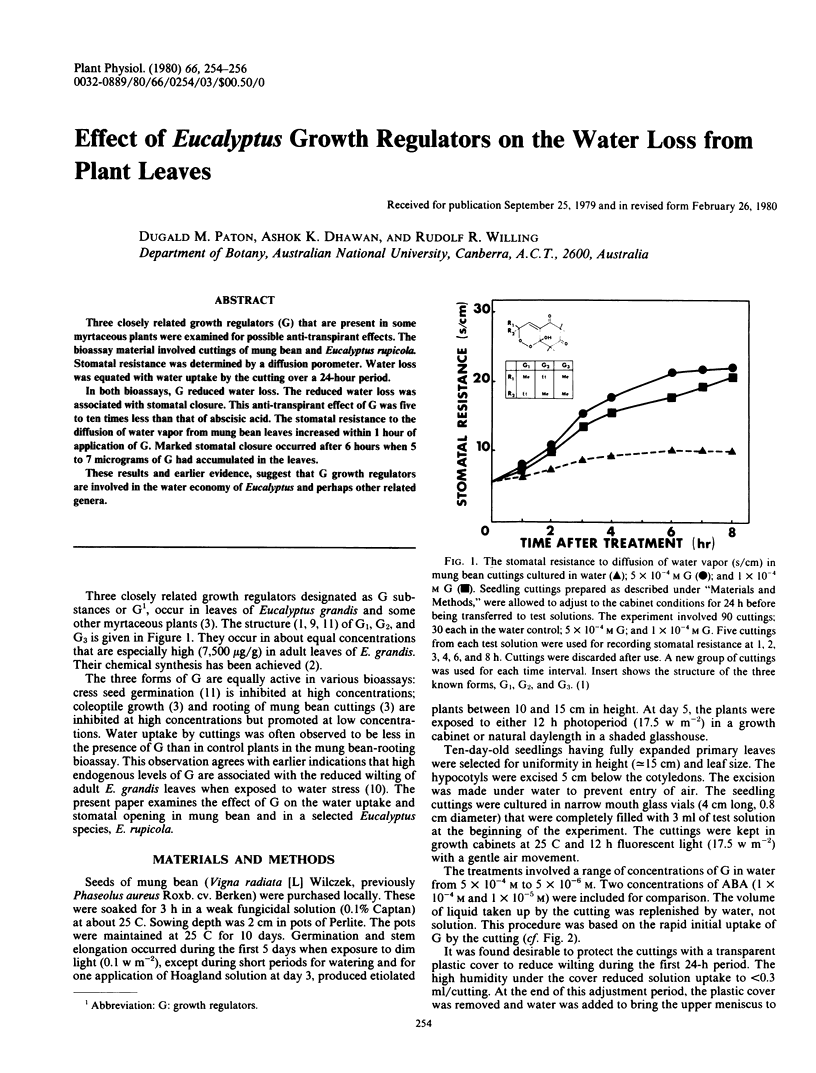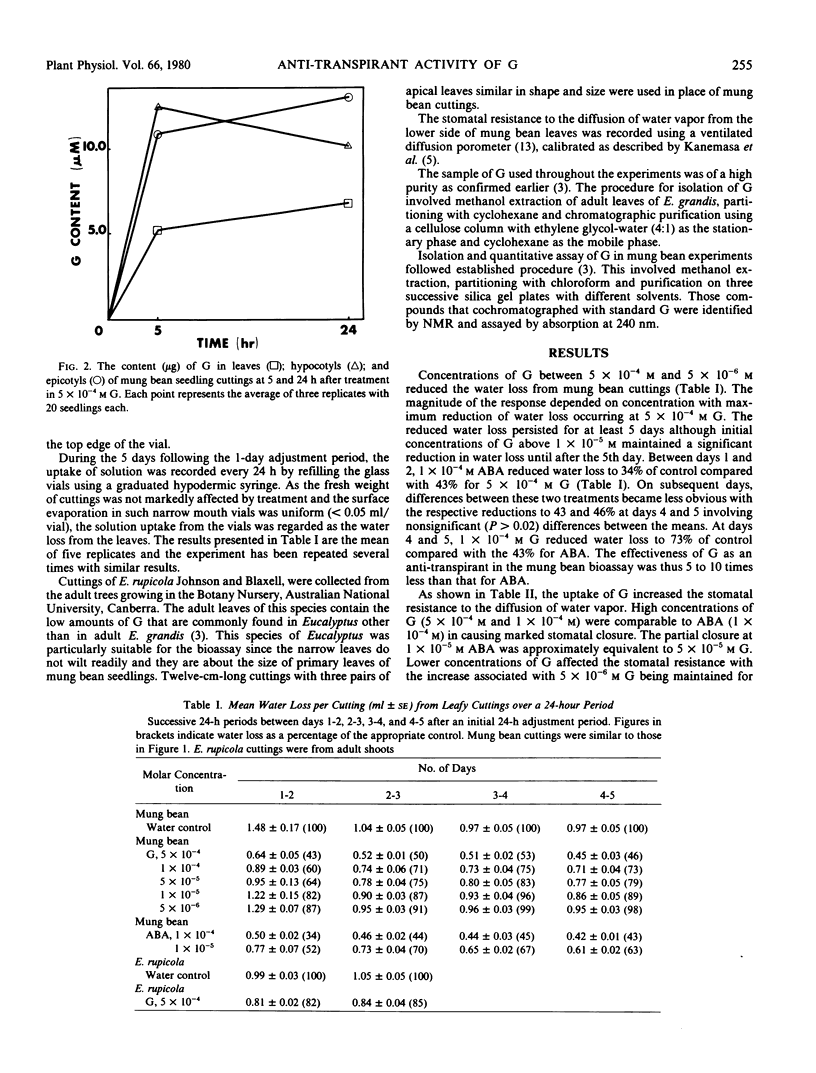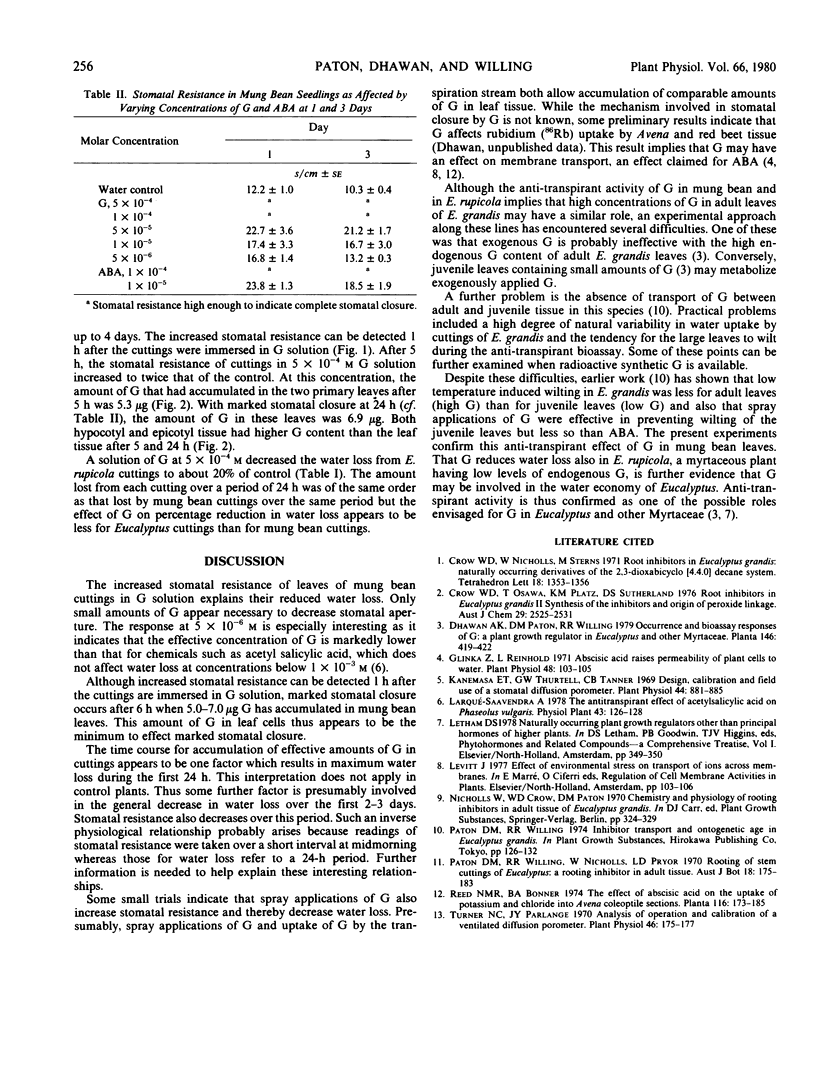Abstract
Three closely related growth regulators (G) that are present in some myrtaceous plants were examined for possible anti-transpirant effects. The bioassay material involved cuttings of mung bean and Eucalyptus rupicola. Stomatal resistance was determined by a diffusion porometer. Water loss was equated with water uptake by the cutting over a 24-hour period.
In both bioassays, G reduced water loss. The reduced water loss was associated with stomatal closure. This anti-transpirant effect of G was five to ten times less than that of abscisic acid. The stomatal resistance to the diffusion of water vapor from mung bean leaves increased within 1 hour of application of G. Marked stomatal closure occurred after 6 hours when 5 to 7 micrograms of G had accumulated in the leaves.
These results and earlier evidence, suggest that G growth regulators are involved in the water economy of Eucalyptus and perhaps other related genera.
Full text
PDF


Selected References
These references are in PubMed. This may not be the complete list of references from this article.
- Glinka Z. Abscisic Acid raises the permeability of plant cells to water. Plant Physiol. 1971 Jul;48(1):103–105. doi: 10.1104/pp.48.1.103. [DOI] [PMC free article] [PubMed] [Google Scholar]
- Kanemasu E. T., Thurtell G. W., Tanner C. B. Design calibration and field use of a stomatal diffusion porometer. Plant Physiol. 1969 Jun;44(6):881–885. doi: 10.1104/pp.44.6.881. [DOI] [PMC free article] [PubMed] [Google Scholar]
- Turner N. C., Parlange J. Y. Analysis of operation and calibration of a ventilated diffusion porometer. Plant Physiol. 1970 Jul;46(1):175–177. doi: 10.1104/pp.46.1.175. [DOI] [PMC free article] [PubMed] [Google Scholar]


